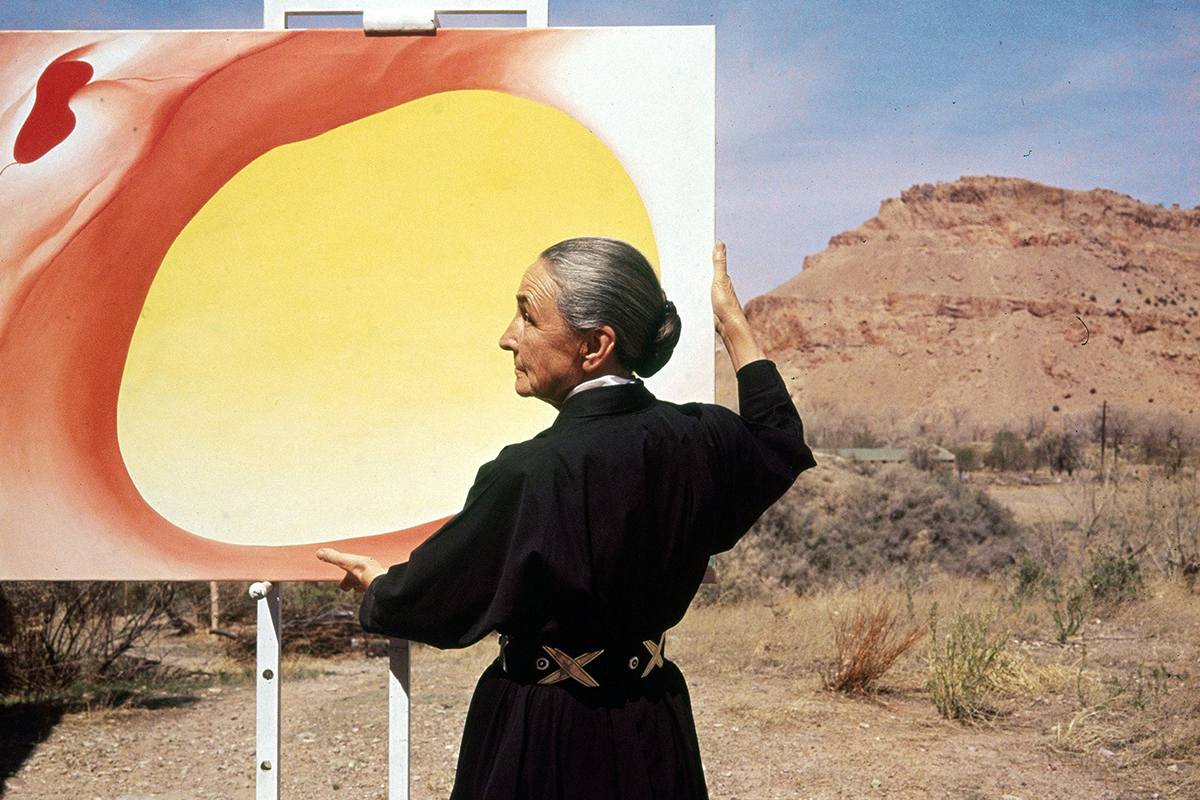
Georgia O’Keeffe in New Mexico with one of her landscape paintings
As a new solo show of Georgia O’Keeffe’s work opens in Madrid, artnet’s Vice President and LUX columnist Sophie Neuendorf reflects on how the American painter’s visionary work and mainstream success paved the way for many of today’s women artists
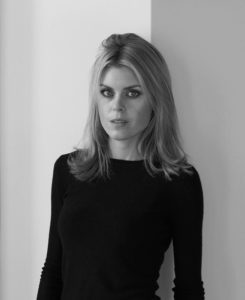
Sophie Neuendorf
American artist Georgia O’Keeffe burst onto the New York gallery scene in 1917 at the age of twenty. At the time, the American art world was under the influence of French Cubism, but O’Keeffe’s abstract charcoal drawings presented a version of modernism that was so radically individual, she quickly became a favourite among collectors – a nearly unthinkable achievement for a young women from the midwest.
Follow LUX on Instagram: luxthemagazine
The artist began making her famous large-scale flower paintings in the 1920s. A new show at Museo Nacional Thyssen-Bornemisza, Madrid includes O’Keeffe’s spectacular Jimson Weed/White Flower No. 1 (1932), which sold for over $44 million at auction in 2014, more than tripling the previous auction record for a female artist. Since then, the market for her work has been steadily growing, with her top 10 most expensive works finding buyers over the past 10 years (source: artnet price database).
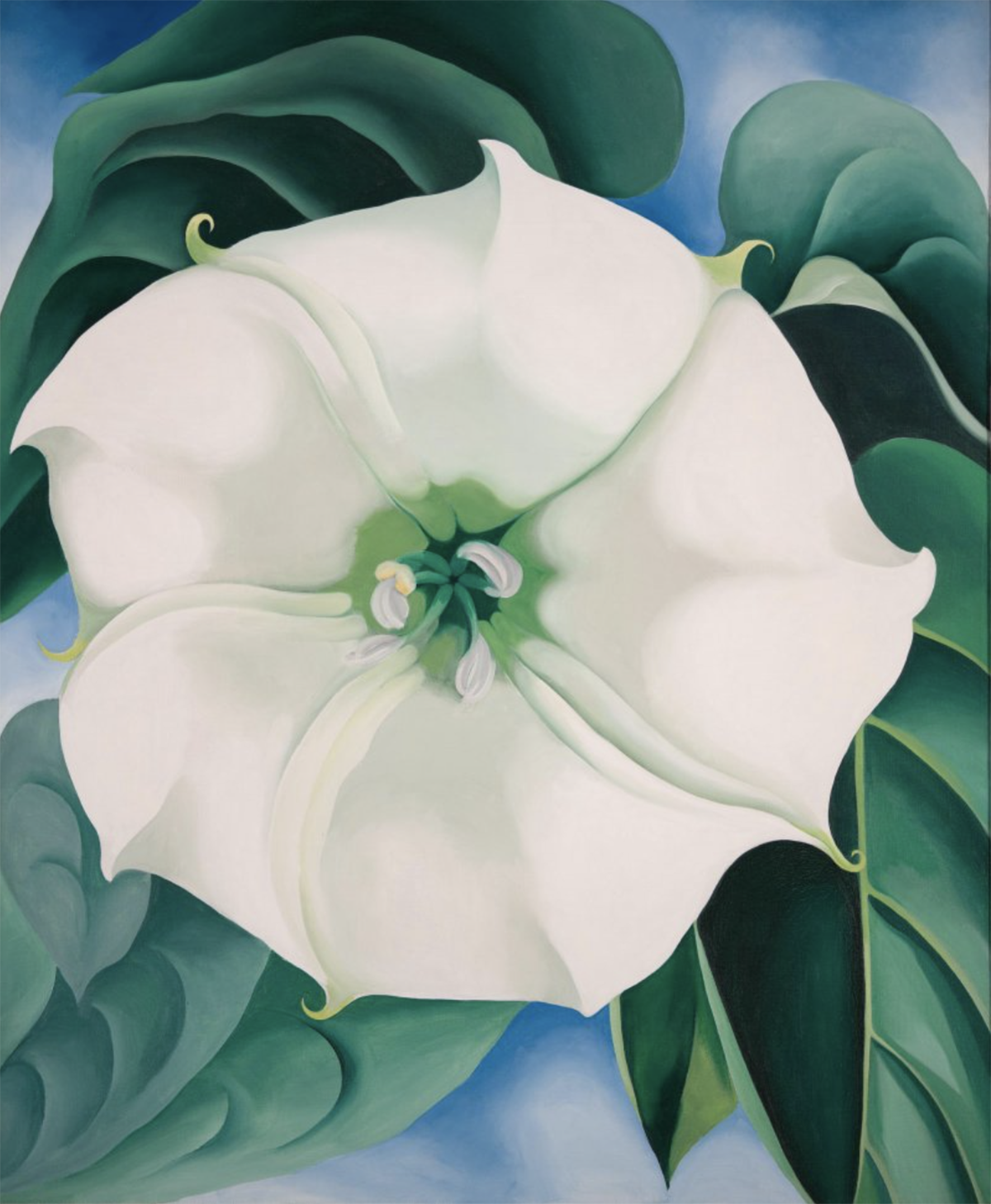
Georgia O’Keeffe, Jimson Weed/White Flower No. 1 (1932)
A recurring subject for O’Keeffe, the flower was a tool through which she could explore varying languages of abstraction and representation, responding to nature as opposed to her inner self. Inside Red Canna (1919), for example, is considered her earliest depiction of a magnified flower in oil. Sensual, sexual, powerful and delicate, the painting beckoned Freudian interpretations throughout her life and to the present day. However, her famous flowers are just one part of her vast canon of work, and in fact, O’Keeffe spent much of her life bristling at the Freudian reading of her delicate folds of flora.
Read more: Artists in residence at Castel Caramel in the south of France
She grew up on the Wisconsin prairie and was forever after enchanted by wide open spaces with limitless horizons. Later, she found a similar sense of ease in the Badlands of New Mexico, where she lived after her husband, the photographer Alfred Stieglitz, passed away. Astonishingly, she didn’t make her first trip to Europe until 1953, when she was 66 years old, but her work was widely shown in major museums across the US. In 1940 she was given a retrospective at the Art Institute of Chicago and in 1946, she became the first female artist to be afforded a retrospective at MoMA. In 1970, her work was celebrated in another retrospective, this time at the Whitney Museum of American Art, New York, which travelled to the Art Institute of Chicago, and the San Francisco Museum of Art.
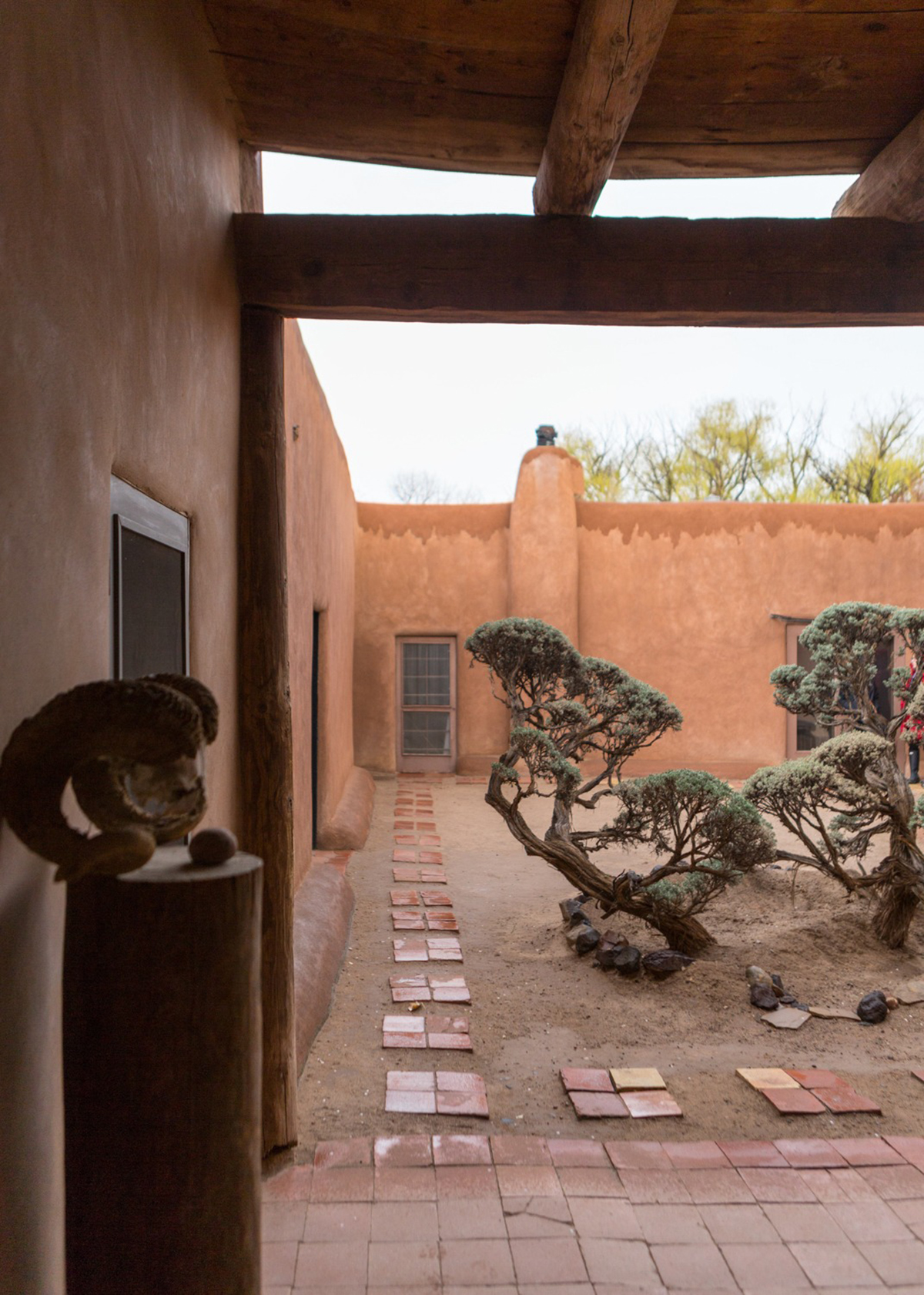
O’Keeffe’s home in New Mexico
Then, as now, women artists face far greater challenges than their male counterparts. To put it into perspective, German artist Gerhard Richter is the highest grossing living male artist, with a total sales value of $2,488,640,798. In contrast, the highest grossing living female artist, Japan’s Yayoi Kusama, has a total sales value of $709,679,123 (source: artnet price database). Kusama is closely followed by visionary artists such as Cindy Sherman, Bridget Riley, Marlene Dumas, and Julie Mehretu. However, artnet’s recent data shows that women artists have been outperforming the S&P 500, indicating strong demand and growth.
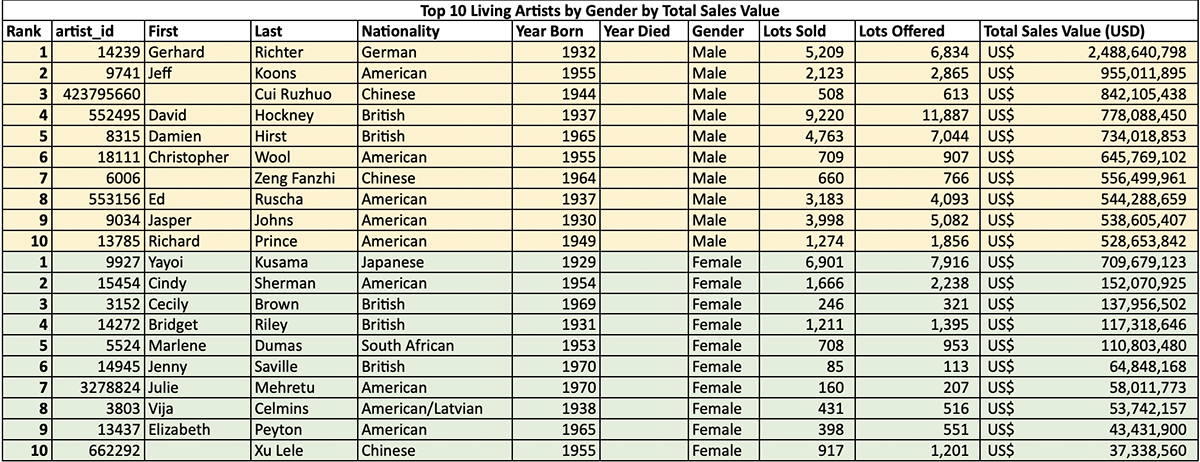
Infographic courtesy of artnet
A strong woman and a visionary painter, O’Keeffe remains an inspiration for many female artists around the globe. She was a feminist who largely contributed not only to the rise of modernism, but also helped to solidify the place of female artists within the historical art canon.
“Georgia O’Keeffe” runs until at 8 August 2021 at Museo Nacional Thyssen-Bornemisza. For more information, visit: museothyssen.org/en/exhibitions/georgia-okeeffe

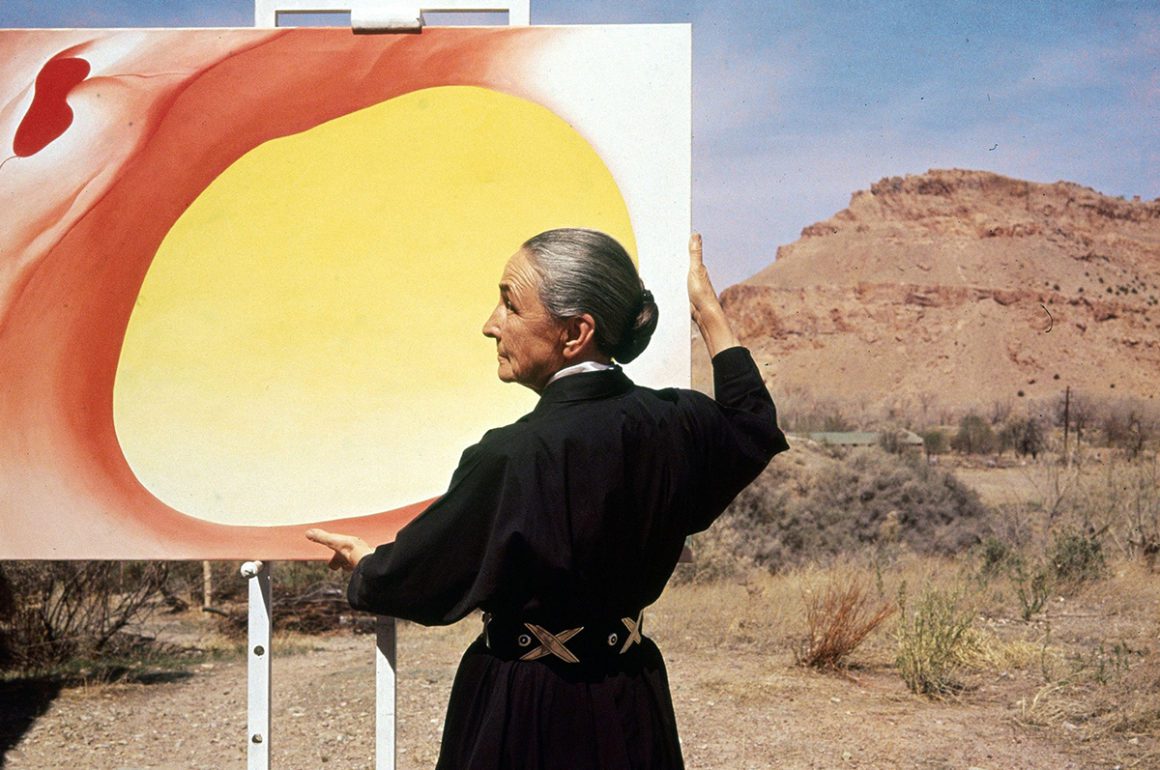





Recent Comments